Last updated on July 13, 2024
Backgammon is a popular game today, especially in the last decade or so with the advent of online gaming. However, the game has a long history, dating back at least five thousand years. In this post, Deluxe Backgammon takes a look at some works of art that include backgammon as a primary theme. All of these images are in the public domain and are therefore free of copyright restrictions. The paintings below date from the Middle Ages until the 19th century. Each painting is a reminder that people have been enjoying the game so much longer than we have.
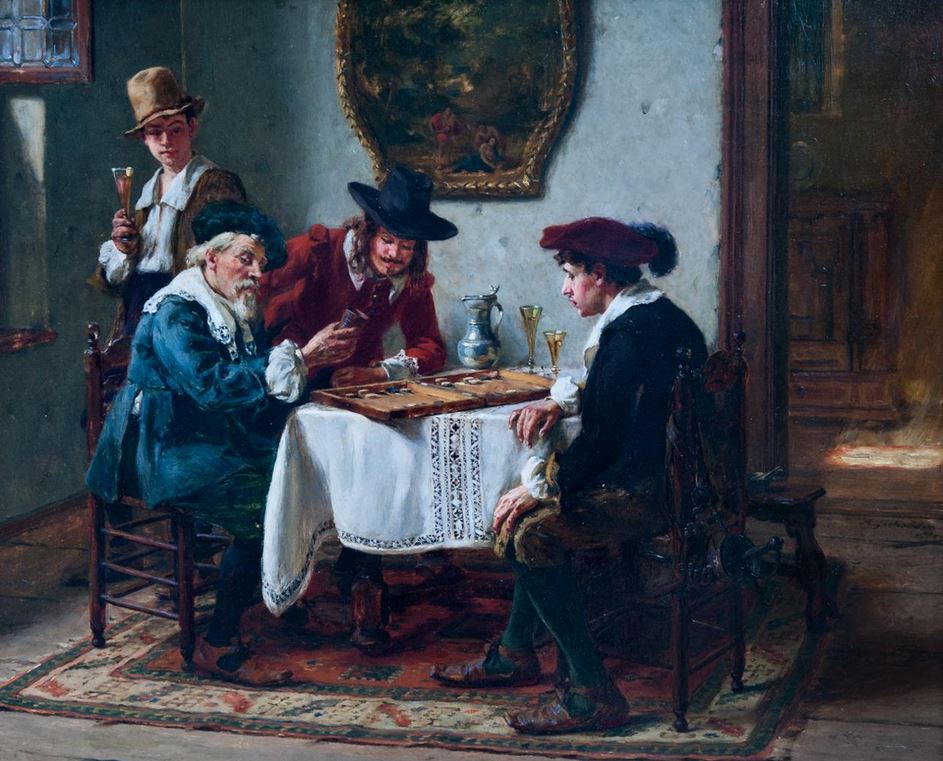
Albert Friedrich Schröder.
Albert Friedrich Schröder was an artist and illustrator born in Dresden in 1954 and was a member of the Munich School of Painting. Although he had German origins, Schröder was influenced by the art of his tutor Charles Verlat, a Belgian painter from Antwerp. He spent his artistic career working in both Munich and Dresden. Schröder commonly illustrated historical and costumed subjects, although he did also depict figures and portraits during his career. As a rule, he favoured interior scenes of wealthy gentlemen passing the time by drinking or gambling.
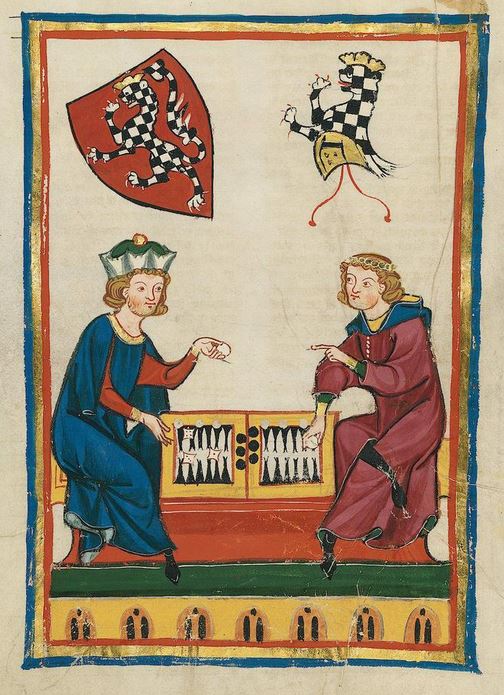
Codex Manesse.
The Codex Manesse is a book of Minnesang poetry that was produced for the Manesse family (Zurich, Switzerland) between c. 1304 and c.1340. Minnesang is a traditional form of High German poetry written about courtly love during the Middle Ages. The codex is famous for the beautifully illuminated set of portraits that depict each poet. One of the illustrations shows Herr Goeli of Baden, a prominent clergyman, playing a game of backgammon with a friend. They are clearly mid-game, with a number of checkers on the bar, and they seem to be debating the legality of the current move.
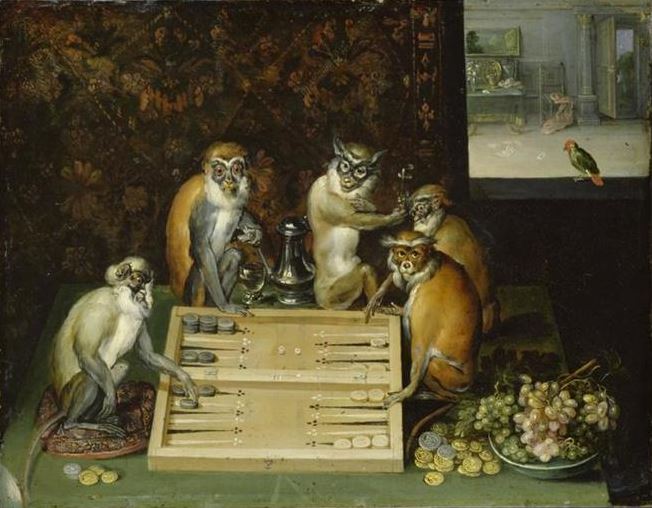
Frans Francken.
Flemish painter, Frans Francken the Younger was born in Antwerp in 1581. He was a versatile artist who contributed to many genres of Flemish art during his lifetime. In particular, he popularised the genre with scenes populated by monkeys. Also known as singeries, French for “Monkey Trick”, they depicted primates dressed in clothes and imitating human behaviour. It was a popular form of satire at the time. One of the most famous examples was the Monkeys Playing Backgammon. The monkeys appear to be having a grand old time, enjoying a drink and gambling on backgammon. The monkey on the front right seems to be particularly flush with coins.
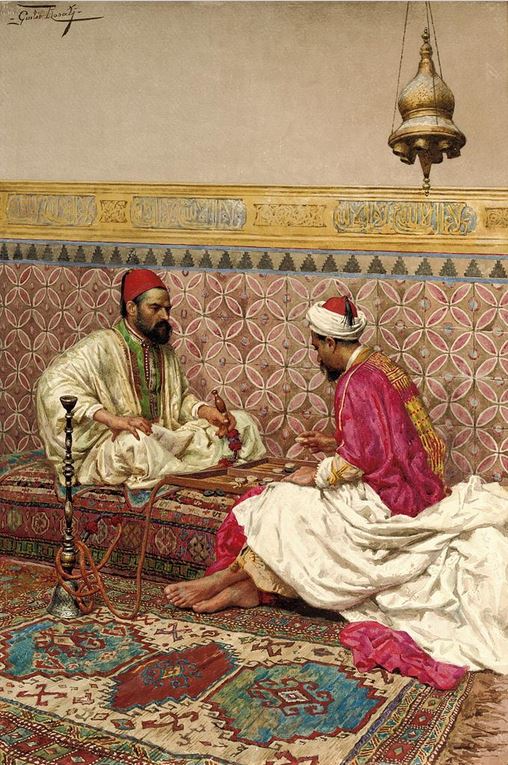
Giulio Rosati.
Giulio Rosati was an Italian painter born in Rome in 1857. Rosati decided against following his traditional family professions of banking and the military and studied painting. His works focus on oriental and academic themes with a particular emphasis on the nobility of Muslim culture. Strangely, despite the fact that he was a prolific painter of orientalism, he never journeyed to the Middle East. The Backgammon Players depicts two oriental gentlemen engrossed in a game of backgammon and smoking from a hookah.
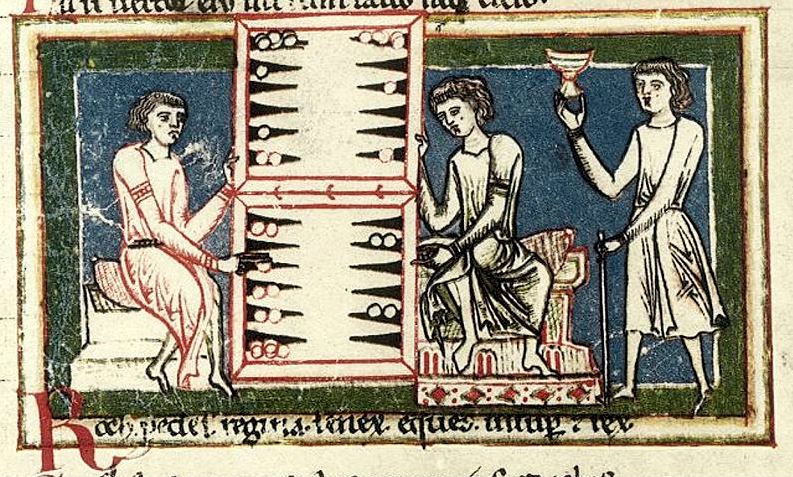
Carmina Burana.
The Carmina Burana is a Latin manuscript consisting of bawdy, irreverent and satirical poetry and dramatic texts. It was written between the 11th and 13th centuries and contains many elaborate illuminations. The text was written to criticise the apparent hypocrisy of the Catholic Church at the time. It contains numerous depictions of the Catholic clergy blatantly ignoring their moral obligations, such as sleeping in, eating heavy food, drinking wine and gambling. Clearly written as a parody, it is an outspoken document that denounces the failure of the Catholic Church to live up to its moral obligations. One of the illuminations depicts the priests indulging in a game of backgammon and drinking from a goblet of wine.
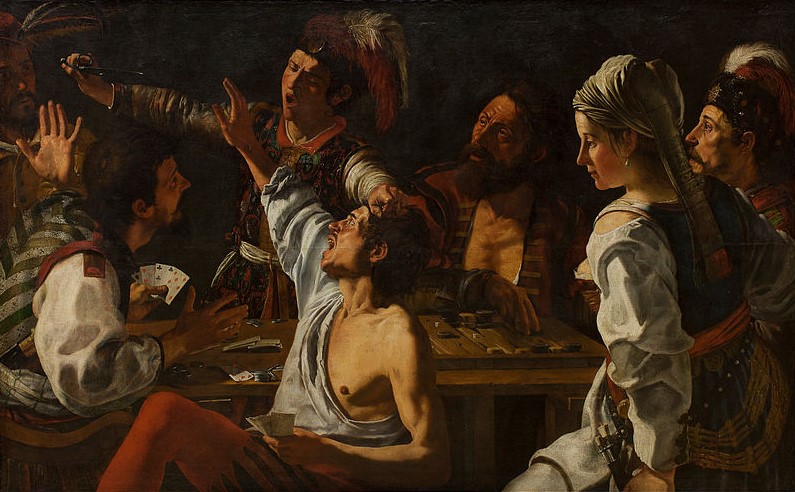
Theodoor Rombouts.
Theodoor Rombouts was born, the son of a wealthy tailor, in Antwerp in 1597. He was a Flemish painter primarily known for his work in Flemish Caravaggism. Although he painted a few religious and mythological works his favoured theme was lively and dramatic social gatherings. His typically secular work depicted merry companies, musicians, card players and gamblers. Some of these works included the game of backgammon, such as the menacing Card and Backgammon Players. Fight over Cards and the more serene The Backgammon Players (below).
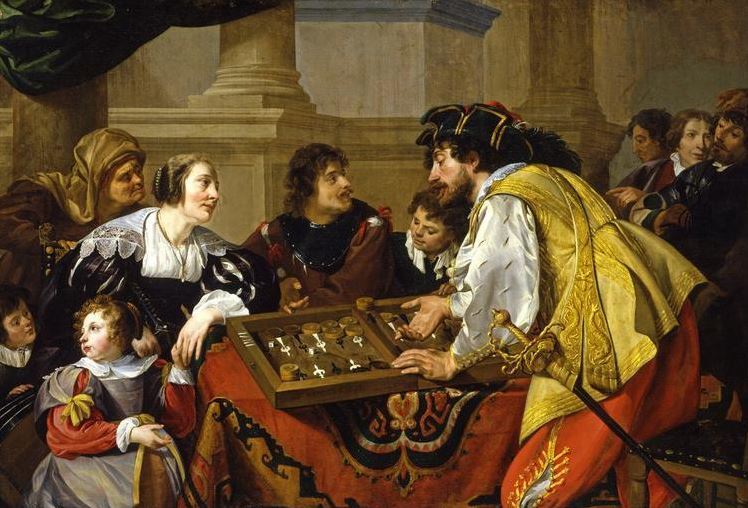
Todas tablas from the Libro de los juegos.
The Libro de los juegos or “Book of the games” in Spanish is a 13th century treatise describing games such as dice, Chess and Backgammon. It is one of the earliest known written descriptions of these games. The manuscript was commissioned by King Alfonso X of Castile and was completed in Toldeo, Spain in c. 1283. It is an important historical document for the study of board games. It consists of ninety-seven pages of parchment and includes many colour illustrations. The image above shows two men playing a table game that would have been the forerunner of the modern game of backgammon.
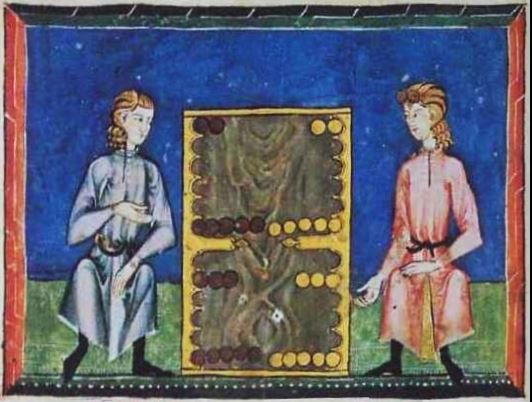
Pietro Pavesi
Pietro Pavesi (1844 – 1907) was a 19th Century Italian naturalist. He studied natural sciences at the University of Pavia, where he graduated in 1865. Dedicated to teaching and research, after teaching natural sciences at the Lugano High School from 1866, he became a university professor in 1871. He taught first in Naples, then in Genoa until in 1875 he arrived in Pavia where he remained permanently, dedicating himself to teaching zoology at the Natural History Museum of Pavia. He also held the position of mayor of Pavia from 1899 to 1902. In addition to his scientific work, he was a talented artist producing many sketches and watercolours. Pictured below is his pencil and watercolour work called The Tric-Trac Players.
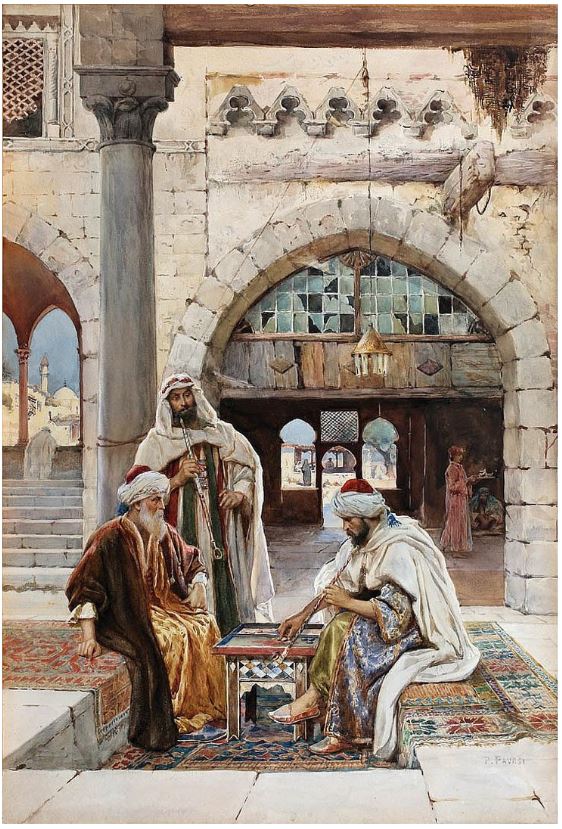

Some great backgammon art work here.